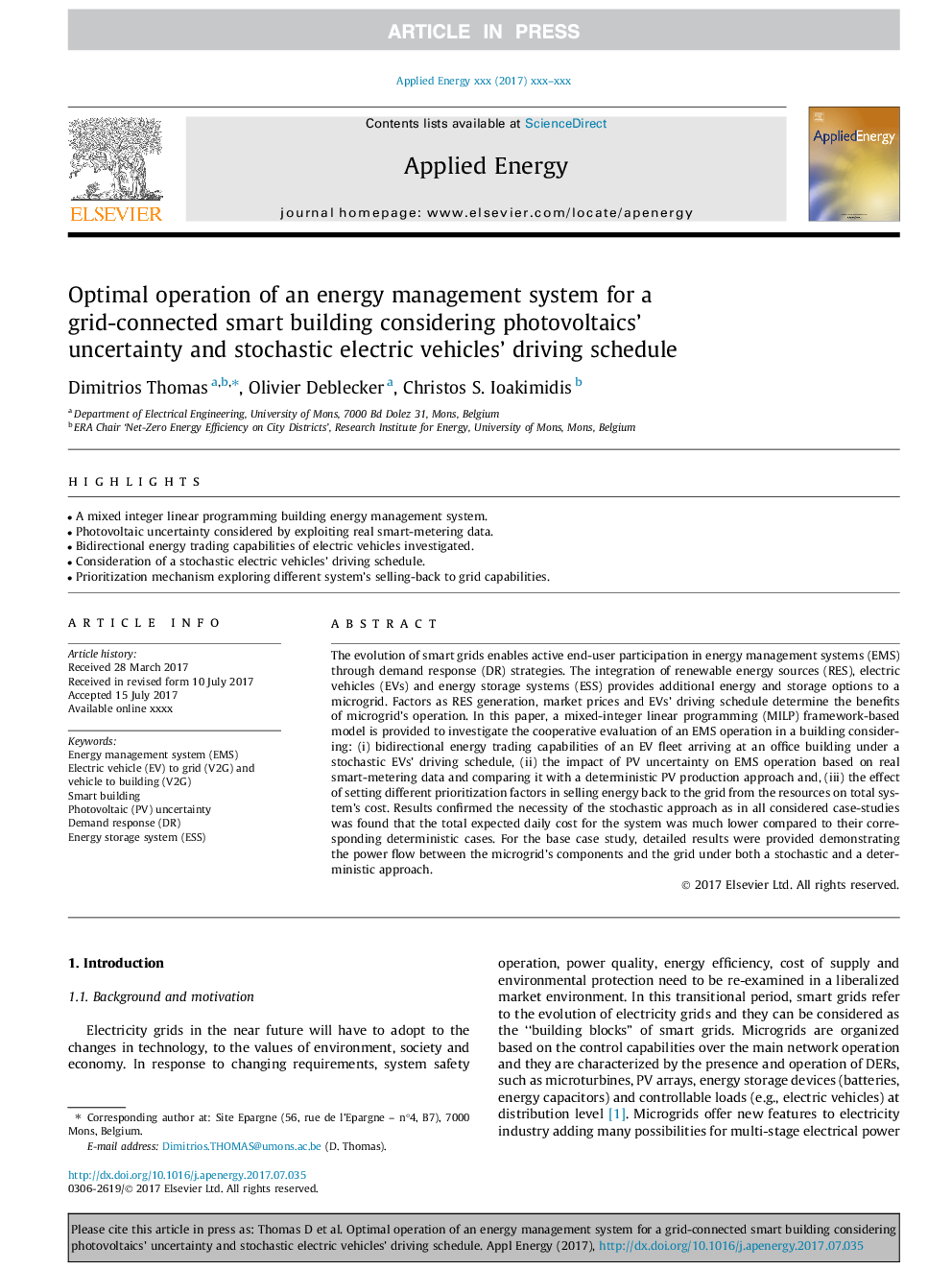| Article ID | Journal | Published Year | Pages | File Type |
|---|---|---|---|---|
| 6681463 | Applied Energy | 2018 | 19 Pages |
Abstract
The evolution of smart grids enables active end-user participation in energy management systems (EMS) through demand response (DR) strategies. The integration of renewable energy sources (RES), electric vehicles (EVs) and energy storage systems (ESS) provides additional energy and storage options to a microgrid. Factors as RES generation, market prices and EVs' driving schedule determine the benefits of microgrid's operation. In this paper, a mixed-integer linear programming (MILP) framework-based model is provided to investigate the cooperative evaluation of an EMS operation in a building considering: (i) bidirectional energy trading capabilities of an EV fleet arriving at an office building under a stochastic EVs' driving schedule, (ii) the impact of PV uncertainty on EMS operation based on real smart-metering data and comparing it with a deterministic PV production approach and, (iii) the effect of setting different prioritization factors in selling energy back to the grid from the resources on total system's cost. Results confirmed the necessity of the stochastic approach as in all considered case-studies was found that the total expected daily cost for the system was much lower compared to their corresponding deterministic cases. For the base case study, detailed results were provided demonstrating the power flow between the microgrid's components and the grid under both a stochastic and a deterministic approach.
Keywords
Related Topics
Physical Sciences and Engineering
Energy
Energy Engineering and Power Technology
Authors
Dimitrios Thomas, Olivier Deblecker, Christos S. Ioakimidis,
